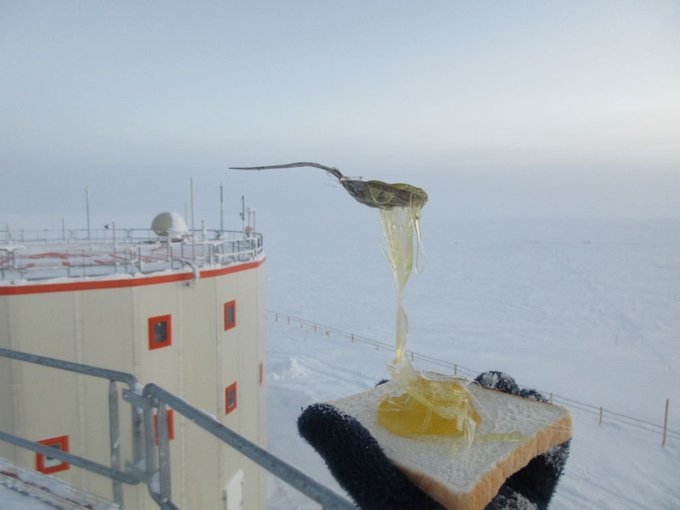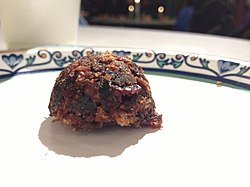Yup, that’s frozen spaghetti! This photograph was taken by French researcher, Cyprien Verseaux, when he tried to cook in Antarctica, (of all places) where temperatures drop to as low as -70C.
Antarctica is a frozen, remote and uninhabited continent. The continent is primarily populated by scientists, researchers, and support staff who live in research stations.
Their diets consist of pre-packaged and frozen food supplies brought from their home countries.
However, it’s worth noting that during special events or celebrations at research stations, residents may organize communal meals or outdoor barbecues where they prepare food like grilled meats, sandwiches, or simple snacks. These events are more about the community gathering and enjoying a shared meal rather than specific traditional street food.
Overall, the culinary focus in Antarctica is primarily on providing nourishing meals in extreme conditions rather than the development of local street food traditions.
In Antarctica, the diets of people living in research stations primarily consist of pre-packaged and frozen food supplies that are brought from their home countries. These supplies are carefully planned and prepared to meet the nutritional needs of the residents, considering the challenging conditions and limited availability of fresh ingredients.
Typically, the meals in Antarctic research stations include a variety of items such as:
- Canned or frozen fruits and vegetables; Canned or dried meats: They serve as a source of protein, including options like canned tuna, chicken, and beef.
- Frozen and dried grains: Rice, pasta, bread, and cereal products are commonly included in the meal plans.
- For dairy products, powdered milk and cheese are often used.

- Canned or dried soups and stews: These provide warm and comforting meals.
- Frozen or canned seafood: Fish and seafood options like shrimp or canned salmon are popular protein sources.
- Snack items: Energy bars, nuts, dried fruits, and chocolate are often available for quick snacks.
Since fresh produce is scarce in Antarctica, efforts are made to incorporate frozen or dehydrated vegetables and fruits into meals to maintain a balanced diet. Some research stations also have small hydroponic systems or greenhouses to grow a limited supply of fresh produce, such as lettuce and herbs, during the summer months.
It’s pretty bland, but the focus is to provide providing nutritionally balanced meals to support the physical and mental well-being of the individuals living and working in Antarctica’s extreme conditions.
Pemmican is a traditional food that is a highly nutritious and long-lasting food source, historically used by Native American tribes and later adopted by European explorers and fur traders.
It is renowned for its ability to provide sustained energy and sustenance, making it an essential survival food in harsh environments and during long journeys.

The preparation of Pemmican involves a simple but effective process:
Meat Preparation: The primary ingredient in Pemmican is lean meat, usually buffalo, deer, elk, or moose. The meat is first sliced into thin strips and then dried. The drying process traditionally involved air-drying the meat in the sun or using smoke from a controlled fire.
Fat Rendering: After the meat is sufficiently dried, it is pounded into a powder or shredded into small fibers. Separately, animal fat, often from the same animal as the meat, is rendered by melting it down until it becomes liquid.
Mixing: The dried and pounded meat is mixed with the rendered fat in a 1:1 or 2:1 ratio, depending on the desired consistency and calorie content. Sometimes, crushed berries or dried fruits are added for additional flavor and nutrients.
Shaping: The mixture is then shaped into small, compact cakes or bars. These cakes are pressed firmly to remove air and ensure a longer shelf life.
Pemmican’s success as a survival food is due to its nutritional density. It is rich in protein, healthy fats, and essential nutrients, providing a good balance of energy and nutrients for sustained physical activity.
The high-fat content allows the body to utilize fat as a source of energy, which is especially beneficial during long periods of physical exertion and limited access to fresh food.



